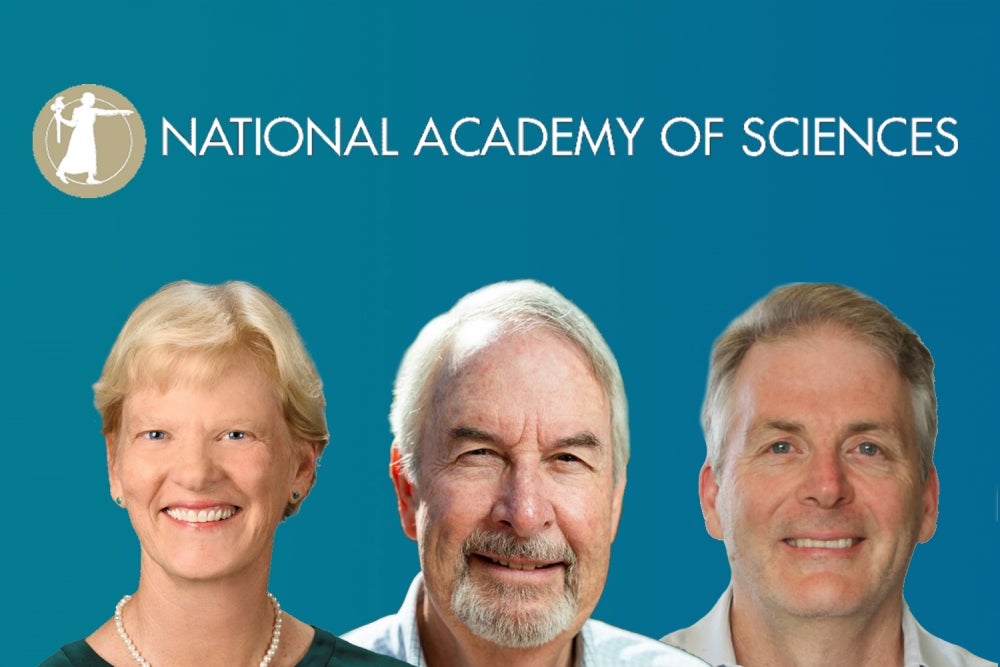
National Recognition
Three UC Santa Barbara professors have been elected to the National Academy of Sciences, an honor among the highest a scientist can achieve. Chemist Alison Butler, geographer Richard Church and materials scientist Craig Hawker take their place among the academy’s 3,029 national and international members. The organization offers membership to scientists in recognition of distinguished and continuing achievements in original research.
“Our UC Santa Barbara community is so honored and proud to congratulate Professors Butler, Church and Hawker,” said Chancellor Henry T. Yang. “Election by one’s peers to the National Academy of Sciences is a deeply meaningful recognition of years of hard work, pioneering research and unique contributions to science and our society. We are inspired by their achievements and delighted to see our distinguished colleagues honored in this way.”
• Alison Butler is a distinguished professor in the Department of Chemistry and associate vice chancellor for academic personnel. Among many other honors, Butler is a fellow of the American Academy of Arts and Sciences, Royal Society of Chemistry, American Chemical Society and American Association for the Advancement of Science.
• Richard Church is a distinguished professor emeritus in the Department of Geography. He is a fellow of the Regional Science Association International and American Association for the Advancement of Science and recipient of the Lifetime Achievement Award, Section on Location Analysis, from the Institute for Operations Research and the Management Sciences.
• Craig Hawker is a distinguished professor in the materials and chemistry departments and holds the Alan & Ruth Heeger Chair in Interdisciplinary Science, Chemistry. He is a fellow of the American Academy of Arts and Sciences and National Academy of Inventors. Hawker is the recipient of the Charles G. Overberger International Prize for Excellence in Polymer Research and the ACS Award in Polymer Chemistry, American Chemical Society.
“I am extremely proud of our distinguished scholars who have been named fellows of the National Academy of Sciences,” said Pierre Wiltzius, executive dean of the College of Letters and Science and Susan and Bruce Worster Dean of Science. “These fellowships recognize their exceptional contributions to research and education that advance our collective scientific knowledge. I congratulate them and look forward to their continued outstanding original work on this campus and beyond.”
Alison Butler studies bioinorganic chemistry, metallo-biochemistry and chemical biology. She focuses on understanding the roles metal ions play in the activities of metalloenzymes (like hemoglobin) and discovering the processes microbes use to acquire the transition metals they need to grow.
Richard Church studies problems defined over space and time including logistics and transportation, location theory, water resource systems and urban and environmental systems. He has produced new techniques in operations research, GIS, decision theory and heuristics.
Craig Hawker serves as director of the California NanoSystems Institute, where he leads an interdisciplinary research group involved in a wide range of fundamental and applied materials chemistry and molecular engineering challenges. Current topics include synthesizing new polymers and fabricating nanostructured materials for biomaterials and energy research.
The National Academy of Sciences was established under a congressional charter signed by President Abraham Lincoln in 1863. It recognizes achievement in science by election to membership and — with the National Academy of Engineering and the National Academy of Medicine — provides science, engineering and health policy advice to the federal government and other organizations.



